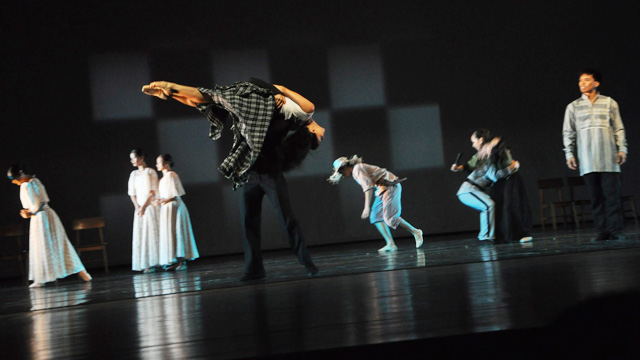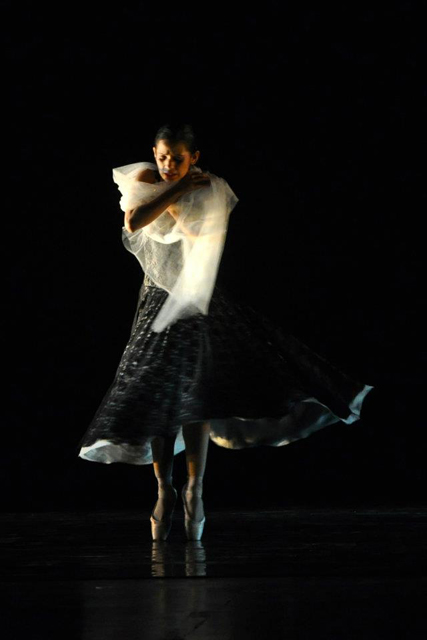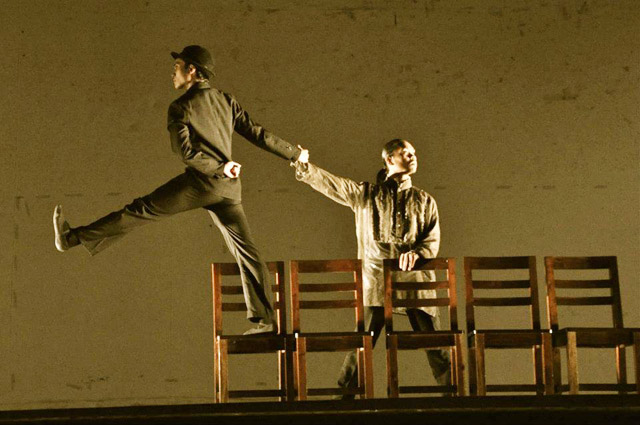Filtered by: Lifestyle
Lifestyle
Dance review: 'Crisostomo Ibarra' closes Rizal's 150th birth anniversary tributes
By IBARRA C. MATEO
There were no elaborate ceremonies to close the country’s yearlong commemoration of the 150th birth anniversary of national hero Dr. Jose P. Rizal, except for the perfunctory laying of wreaths before his monuments.
This was in complete contrast to the regal rites of remembrances on June 18, 2011, which were launched with the tag “Rizal@150” and with much hype.
But credit the Ballet Philippines (BP) under the quietly potent leadership of its president, Margie Moran-Floirendo, and artistic director Paul Alexander Morales for restaging on June 16, 17, 23 and 24 the company’s all-Filipino production and award-winning ballet “Crisostomo Ibarra” as one of the cultural shows marking the end of the sesquicentennial salutes to Rizal.

'Crisostomo Ibarra' was named the Outstanding Production of 2010 at the Gawad Buhay Awards for the Performing Arts. Photos courtesy of Ballet Philippines
First mounted on Oct. 15-17, 2010 with libretto and choreography by Morales based on Rizal’s novel the “Noli Me Tangere” and music composed by pianist Jed Balsamo, the ballet “Crisostomo Ibarra” retraces the “Noli” from the viewpoint of the main character himself.
Months after its world premiere, the ballet won the “Outstanding Production of 2010” prize from the Gawad Buhay Awards for the Performing Arts, then went on a tour across the archipelago before captivating the overseas audience, notably homesick Filipinos.
BP has long been giving muscle, music, and movement into Rizal, his beloved, and the characters in his novels. BP founder Alice Reyes created “Sisa” in May 1979, Agnes Locsin choreographed “Elias” in February 1997, and Alden Lugnasin, now BP resident choreographer, taught Josephine Bracken how to dance ballet in “Rizal Revisited” in August 2007.
The limited restaging of “Crisostomo Ibarra” is historic in itself because it adhered closely to the original intent and spirit of the choreographer and the musical composer, or at least the June 16 and 23 gala performances. Morales wanted an intimate ballet, with a small cast, and one that could be mounted in a sala.
For his part, Balsamo, a multi-awarded composer, arranger, and musical director for stage and screen, wrote the musical score for the 12-movement ballet in eight scenes consisting of a quintet: oboe, bassoon, violin, cello, and piano. He envisioned “top-caliber soloists with chamber music sensitivities” playing his music.

Trofeo was beguiling as Maria Clara.
The June 16 gala show, the first time “Crisostomo Ibarra” was staged in Manila with live music, was a rare feat and grand experience, with Earl John Arisola dancing as Crisostomo Ibarra and Katherine Sanchez Trofeo, who was beguiling and bewitching in her clean, clear lines and emotionally-laden movements, as the melancholic Maria Clara.
The young Arisola and the seasoned Trofeo were a splendidly and engagingly divine duo seemingly powered by helium as they fluttered, flit, jumped, tiptoed, and hopped on toes.
When the ballet was first mounted in October 2010 at the Cultural Center of the Philippines, the self-effacing Arisola was only a reed-thin apprentice but noticeably burning with a tinge of quiet bravura, seemingly powerful enough to launch a rocket ship someday. Upon the show’s return to CCP this June, Arisola—now a full-toned, visibly virile dancer who is confident in his footwork, arcs, and jumps—did not disappoint the audience when he essayed the lead role closely identified with Jean Marc Cordero, the newest, hottest, and biggest male star of local ballet.
In the recently concluded 2012 Helsinki International Ballet Dance Competition, considered as the “Olympics of Ballet,” Cordero’s onstage and offstage partner, Candice Adea, won the gold medal in the competition’s senior women division, while Cordero himself was awarded the “Best in Pas de Deux Technique.”
The haunting yet stirring interpretation by soloists Ariel Sta. Ana (clarinet), Adolfo Mendoza (bassoon), Dino Decena (violin), Herrick Ortiz (cello), and Mary Anne Espina (piano) of Balsamo’s score gave a rich aural texture to the entire piquant performance. It is to the credit of the music ensemble that it did not distract the audience as it played and shared stage with the BP dancers. The June 16 and 23 galas, perhaps, would be lovingly remembered for their “twin shows—a ballet and a chamber music performance,” evoking elegant Old World ambience of chamber music and luscious dancing in a comfortable setting. Not a common occurrence in the Philippines, nowadays.
Balsamo poetically composed a musical score with few major themes that rhythmically vary their emotional tones and colors depending on a scene, instead of assigning one motif per character. Listen how Balsamo surprisingly wove into the score the Gregorian chant “Dies Irae” to add a flavor of religious undertones. He even inserted bars of Charles Gounod’s “Meditation on the First Prelude of Johann Sebastian Bach,” popularly recognized as the “Ave Maria” song to softly hint a connection with classical music. The “Meditation on the First Prelude of Johann Sebastian Bach” was mentioned in the original text of “Noli.”

Earl John Arisola as Crisostomo Ibarra (in black) and Marvin Arizo as multo.
In the 43 years of BP, the “Crisostomo Ibarra” production is the third work to have its own recording called “Crisostomo Ibarra: Original Soundtrack.” The first two BP soundtracks were for the rock opera ballet “Rama Hari” (1980) and the ballet cum musical “Encantada” (1992).
If only because Balsamo’s score will be rendered live again to accompany the BP dancers on June 23 gala show, it is more than a compelling reason to cancel your appointments to catch this ballet with picturesque choreography ranging from classical to modern, supported by multi-media backdrop, and with superb live music.
Most dance companies in the country, these days, do not mount shows with live music, especially with marvelous musicians such as the ones assembled by Balsamo for this undertaking. As a cost-cutting measure, artistry is sacrificed with the use of recorded music which alters the acoustics, the “naturalness,” and quality of a performance. It is always an extremely sad and tough choice between live or recorded music for dance companies when staging shows.
For the June 16 gala of Crisostomo Ibarra, Arisola and Trofeo led the gorgeously gleaming 15-member cast, with Marvin Ryan Arizo playing the roles of Multo and Padre Damaso; Carissa Adea (Sisa), Rita Winder (Sinang and Lady), Anna Margarita (Dona Victorina), Edana Mae Labatoria (Dona Consolacion), Karmela Gaile Cortez (Tia Isabel), Gilliane Gequinto (Victoria), Janine Myrtel Arisola (Prinsesa), Emmanuel Guillermo (Alferez and Kambal), Richardson Yadao (Tinyente, Don Basilio, and Komedyante), Timothy Paul Cabrera (Elias and Komedyante), Cyril Fallar (Don Tiburcio), and Kaizer Policarpio (Padre Sibyla and Padre Salvi).
Despite minor production imperfections, the entire cast arrested the audience. Scene after scene, the actions and dancers on stage never faltered nor lost steam in their provocative and powerful performance.
The ballet “Crisostomo Ibarra” is a must see for foreign visitors and dignitaries wishing to learn a bit of Rizal, the “Noli,” and contemporary Philippine dance and music. –KG, GMA News
All photos courtesy of Ballet Philippines
More Videos
Most Popular




